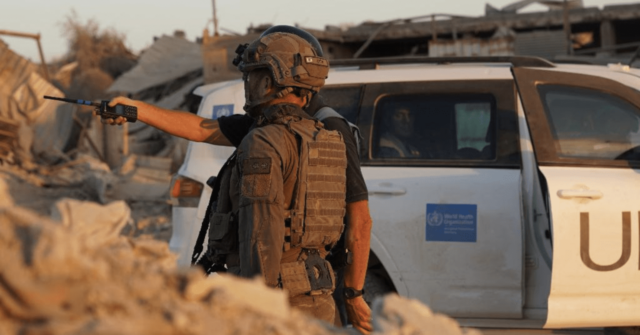The Israel Defense Forces (IDF) has recently intensified its humanitarian operations in northern Gaza while concurrently expanding military actions against Hamas forces in the area. This strategic shift aims to prevent Hamas from regrouping in proximity to Israel’s major population centers, a move prompted by heightened concerns regarding the humanitarian conditions in Gaza. The IDF has established a dedicated division for humanitarian affairs known as the Coordination of Government Activities in the Territories (COGAT), which has been tasked with enhancing assistance efforts to civilians affected by the ongoing conflict. The IDF is not only focusing on military objectives but is also committed to adhering to international law and ensuring the welfare of civilians trapped in the conflict zones.
In light of ongoing operations in the Jabaliya area—where Hamas operatives are reportedly embedded within civilian environments—the IDF has pledged to facilitate humanitarian aid access to Gaza residents, particularly in the medical domain. Recent initiatives highlight this commitment: a coordinated effort led to the safe transfer of 33 patients along with medical personnel from Kamal Adwan Hospital to other functioning medical facilities within the Gaza Strip. This operation was executed with the backing of the Gaza Coordination and Liaison Administration (CLA) and included precise joint efforts with the Red Cross, showcasing a multi-faceted approach involving both military and humanitarian resources.
Furthermore, the IDF has been proactive in supporting medical services in the northern Gaza region. A significant delivery of 68,650 liters of fuel was provided to local hospitals to sustain essential medical operations amid escalating military efforts. This delivery underscores the IDF’s focus on maintaining critical infrastructure even as it actively targets Hamas installations. Additionally, 800 blood transfusion units, donated by UNICEF, have been dispatched to assist medical centers in their ongoing provision of care. Such logistical undertakings reflect a dual commitment: the IDF’s dedication to military objectives while also ensuring that humanitarian needs are met during this challenging period.
Despite these efforts, challenges persist in coordinating and delivering humanitarian aid effectively. Israeli government spokesman David Mencer recently raised concerns about the limited success of United Nations aid delivery operations within Gaza, reporting that only 12 of over 100 trucks designated for aid had entered the territory. This issue highlights the complexities involved in humanitarian logistics amidst ongoing conflict. The criticism of the UN’s efforts suggests a disconnect between the humanitarian needs on the ground and the effectiveness of international aid delivery mechanisms. The IDF’s transitional approach of supporting civilians while aggressively pursuing Hamas indicates a nuanced understanding of the intricacies of the current situation.
The situation in Gaza remains dire, with civilians caught in the crossfire of military operations and an escalating humanitarian crisis. The IDF has committed to finding ways to balance its military imperatives with humanitarian responsibilities, aiming to protect civilian lives as much as possible while targeting terrorist infrastructure. This delicate balance is critical, especially in a densely populated area like northern Gaza, where the consequences of military operations can have a profound impact on the civilian population. Ongoing coordination with international bodies like the Red Cross emphasizes the necessity for comprehensive solutions embraced by both humanitarian organizations and military authorities.
In summary, while the IDF takes robust actions to dismantle Hamas’ operational capabilities, it simultaneously amplifies its humanitarian efforts within Gaza. The reported successes in transferring medical personnel and patients, along with essential supplies like fuel and blood units, reflect a significant commitment to addressing medical needs created by the conflict. However, persistent logistical challenges in delivering aid underscore the complexity of the humanitarian landscape in wartime conditions. Effective cooperation between military and humanitarian channels will be vital for alleviating the suffering of ordinary civilians during this crisis, making it essential for all involved parties to prioritize both strategic and humanistic considerations in navigating the difficult realities on the ground.

